
Marine biology is the scientific study of the biology of marine life, organisms in the sea. Given that in biology many phyla, families and genera have some species that live in the sea and others that live on land, marine biology classifies species based on the environment rather than on taxonomy.
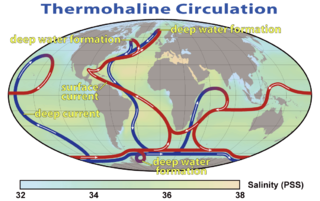
Oceanography, also known as oceanology and ocean science, is the scientific study of the oceans. It is an Earth science, which covers a wide range of topics, including ecosystem dynamics; ocean currents, waves, and geophysical fluid dynamics; plate tectonics and the geology of the sea floor; and fluxes of various chemical substances and physical properties within the ocean and across its boundaries. These diverse topics reflect multiple disciplines that oceanographers utilize to glean further knowledge of the world ocean, including astronomy, biology, chemistry, climatology, geography, geology, hydrology, meteorology and physics. Paleoceanography studies the history of the oceans in the geologic past. An oceanographer is a person who studies many matters concerned with oceans, including marine geology, physics, chemistry and biology.
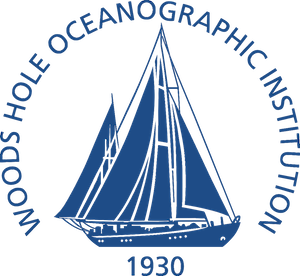
The Woods Hole Oceanographic Institution is a private, nonprofit research and higher education facility dedicated to the study of marine science and engineering.

The Scripps Institution of Oceanography in San Diego, California, US founded in 1903, is one of the oldest and largest centers for ocean and Earth science research, public service, undergraduate and graduate training in the world. Hundreds of ocean and Earth scientists conduct research with the aid of oceanographic research vessels and shorebased laboratories. Its Old Scripps Building is a U.S. National Historic Landmark. SIO is a division of the University of California San Diego (UCSD). The public explorations center of the institution is the Birch Aquarium at Scripps. Since becoming part of the University of California in 1912, the institution has expanded its scope to include studies of the physics, chemistry, geology, biology, and climate of Earth.

Conrad Hal Waddington was a British developmental biologist, paleontologist, geneticist, embryologist and philosopher who laid the foundations for systems biology, epigenetics, and evolutionary developmental biology.
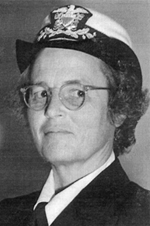
Mary Sears was a Commander in the United States Naval Reserve and an oceanographer at the Woods Hole Oceanographic Institution (WHOI).
Hopkins Marine Station is the marine laboratory of Stanford University. It is located ninety miles south of the university's main campus, in Pacific Grove, California on the Monterey Peninsula, adjacent to the Monterey Bay Aquarium. It is home to ten research laboratories and a fluctuating population of graduate and undergraduate students. It has also been used for archaeological exploration, including of the Chinese-American fishing village that existed on the site before burning down in 1906.
Annual Reviews is an independent, non-profit academic publishing company based in San Mateo, California. As of 2021, it publishes 51 journals of review articles and Knowable Magazine, covering the fields of life, biomedical, physical, and social sciences. Review articles are usually “peer-invited” solicited submissions, often planned one to two years in advance, which go through a peer-review process. The organizational structure has three levels: a volunteer board of directors, editorial committees of experts for each journal, and paid employees.
Martin Wiggo Johnson, was an American oceanographer at Scripps Institution of Oceanography. He is known as an author of the landmark reference work The Oceans: Their Physics, Chemistry and General Biology ; for explaining the deep scattering layer (DSL) as a result of what is now called the diel vertical migration; and for studies of zooplankton that revealed that the physics of water movement was an important influence on population biology and community diversity.
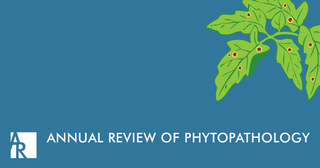
The Annual Review of Phytopathology is a peer-reviewed academic journal that publishes review articles about phytopathology, the study of diseases that affect plants. It was first published in 1963 as the result of a collaboration between the American Phytopathological Society and the nonprofit publisher Annual Reviews. As of 2022, Journal Citation Reports lists the journal's 2021 impact factor as 10.850, ranking it seventh of 238 journal titles in the category "Plant Sciences". Its current editors are Jan E. Leach and Steven E. Lindow.

Annual Review of Plant Biology is a peer-reviewed scientific journal published by Annual Reviews. It was first published in 1950 as the Annual Review of Plant Physiology. Sabeeha Merchant has been the editor since 2005, making her the longest-serving editor in the journal's history after Winslow Briggs (1973–1993). As of 2022, Journal Citation Reports lists the journal's 2021 impact factor as 28.310, ranking it first of 238 journal titles in the category "Plant Sciences".
The Society for Underwater Technology (SUT) is an international learned society for marine science and technology with headquarters in London, England that was founded in 1966. There are branches in Aberdeen (Scotland), Houston (USA), Rio de Janeiro (Brazil), Newcastle (England), Perth (Australia), London (England), Melbourne (Australia), Kuala Lumpur (Malaysia), Singapore, Norway (Bergen), China (Beijing) West Africa (Nigeria), the Middle East (UAE) and new branches in early stages of development in St John's Newfoundland & the Eastern Mediterranean to be based in Cyprus. Membership is open to individuals, companies, and institutions with a genuine interest in the broad field of underwater technology. SUT is registered as a charity in the UK, other branches are constituted as charities or 'not-for-profits' as per local legislation.

The Annual Review of Marine Science is an annual peer-reviewed scientific review journal published by Annual Reviews. It was established in 2009. It covers all aspects of marine science. The co-editors are Craig A. Carlson and Stephen J. Giovannoni. As of 2022, Journal Citation Reports gives the journal a 2020 impact factor of 16.561, ranking it first out of 113 in the category "Marine & Freshwater Biology", first out of 66 in the category "Oceanography", and second out of 87 journals in the category "Geochemistry & Geophysics".
The Bragg UNSW Press Prize for Science Writing was established in 2012 to recognise excellence in Australian science writing. The annual prize of A$7,000 is awarded to the best short non-fiction piece of science fiction with the aim of a general audience. Two runners up are awarded $1,500 each.

Opisthoteuthis is a genus of cirrate octopuses, sometimes known as flapjack octopuses, which are found in all the world's oceans.

Nancy Helen Marcus was an American biologist and oceanographer. During her graduate studies, Marcus became known as an expert on copepod ecology and evolutionary biology. She began her career as a postdoctoral fellow at the Woods Hole Oceanographic Institution where she studied copepod dormancy and its implications for marine aquaculture. She continued her field research as a professor of oceanography and later as the director of the Florida State University Marine Laboratory (FSU). During this time Marcus was elected as a Fellow of the Association for Women in Science and the American Association for the Advancement of Science and served as the president of the Association for the Sciences of Limnology and Oceanography. As the president, she led efforts in increase education activities and to increase the endowment fund.
The K. Radway Allen Award is the highest honour awarded by the Australian Society for Fish Biology. It recognises individuals who have made an "outstanding contribution in fish or fisheries science." The award, inaugurated in 1995, is named for New Zealand fisheries biologist Kenneth Radway Allen.
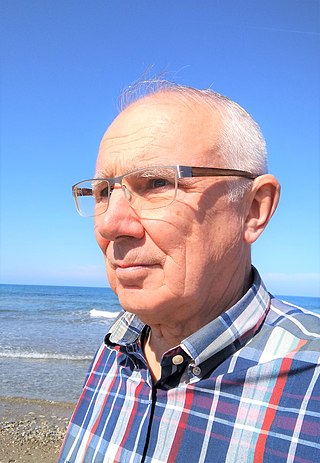
Imants (Monty) George Priede is a British-Latvian zoologist, author and academic. He is Professor Emeritus in the University of Aberdeen, Scotland known for his work on fish and life in the deep sea.
Irene Agnes McCulloch was a marine biologist and USC biological sciences professor. McCulloch started at the University of Southern California in 1924 where the marine biology research department lacked funding and resources. To better the research being done, McCulloch convinced George Allan Hancock to fund the G. Allan Hancock Foundation for Marine Research, which was then renamed the Hancock Institute for Marine Studies. McCulloch was given her own foundation in 1969 at USC to continue marine biology research. McCulloch studied microbes within the Pacific Ocean with her main focus being foraminifera.

Mary Belle Allen was an American botanist, chemist, mycologist, algologist, and plant pathologist, and a pioneer of biochemical microbiology. With Daniel I. Arnon and F. Robert Whatley, she did breakthrough research discovering and demonstrating the role of chloroplasts in photosynthesis. In 1962 she received the Darbaker Prize from the Botanical Society of America for her work on microbial algae. In 1967 she was nominated jointly with Arnon and Whatley for a Nobel Prize.













